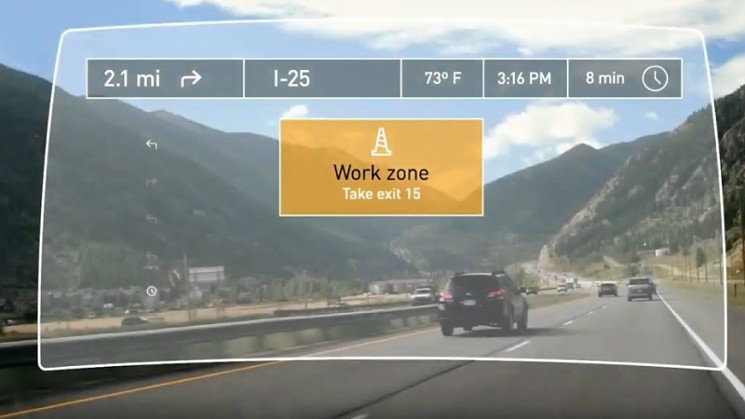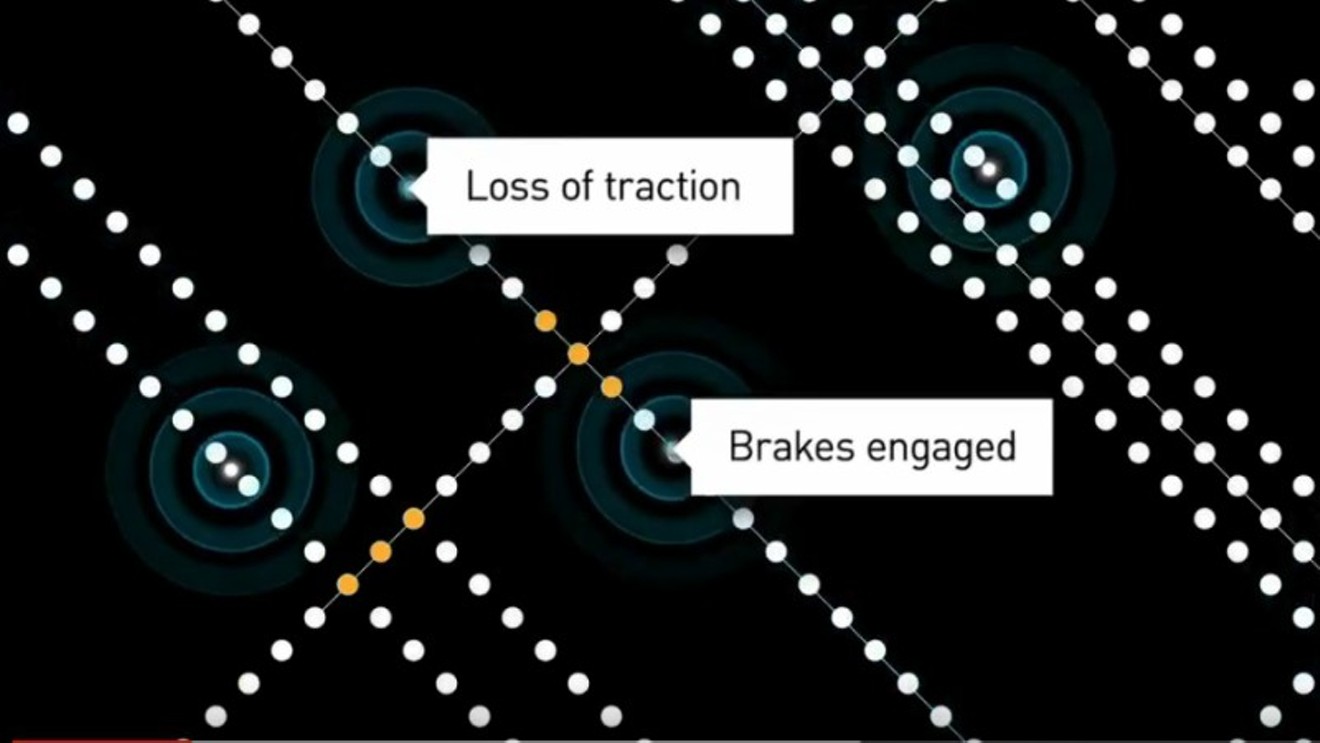But Wes Maurer, head of intelligent transportation systems for CDOT, reveals that helping big trucks navigate through the state in a more efficient manner is only the beginning.
"Colorado and CDOT are building a first-of-its-kind system that allows vehicles to communicate with the infrastructure of the roadways," Maurer says.
There's a reason Maurer discusses this subject in the present tense. The project, being tackled in conjunction with Panasonic Corporation of North America, isn't a far-off concept that could take decades to develop and might not ever come to fruition. Devices related to what's known as V2X technology are already being installed along the Interstate 70 mountain corridor, and while they're not able to talk to the vast majority of rides presently using the route, that's likely to change early in the next decade.
According to CDOT, Toyota is planning to deliver V2X-equipped vehicles in 2021, with other manufacturers expected to follow suit shortly thereafter.
When that happens, CDOT will be ready, Maurer notes: "In the next three to five years, we would anticipate that Colorado will have hundreds, and perhaps thousands, of miles of roadways able to communicate with vehicles."
Here's how Maurer summarizes the approach and the way it would work:
"CDOT will outfit our roadways with very small roadside units that are able to communicate information from vehicles and also receive communication from vehicles," he explains. "For instance, if an air bag went off, you would know there was an accident. If that information is sent out to the infrastructure, we would send Colorado State Patrol or a courtesy patrol to investigate the potential crash."
Drivers in V2X-equipped cars might see the announcements on their windshield, as seen in the CDOT simulation below.
At first blush, this methodology sounds similar to data transmitted via Waze or other traffic apps. But Maurer believes V2X will take information to the next level.
"Like any manual data-entry process, there's going to be human error," he allows. "Waze is a phenomenal tool and a great resource for providing information to motorists. However, the accuracy of the data we provide to the public will be a very big consideration for us, and having real-time, accurate data that's transmitted directly from a vehicle to the infrastructure is one way we hope to improve accuracy and the decision-making we do on the roadway."

Colorado Department of Transportation via YouTube
The tech will also "optimize transportation by using our roads more effectively and helping to deliver goods faster — something we call 'platooning,'" he continues. "Having the data that would communicate with trucks will naturally allow companies to dispatch their fleets more efficiently, at a less congested time of day. And that's going to reduce jams. Nobody wants to be stuck in traffic, but for business, that's lost revenue and time. So in addition to being safer, it will also be a cost saver, because it will allow for lower fuel consumption and lower fuel costs."
Of course, for the system to work at an optimal level, all cars should be able to communicate with the V2X gadgets, including ones built prior to 2021. Maurer thinks that will be possible.
"We're very interested in after-factory markets that would make this technology as affordable and accessible as possible to everyone on the road," he says.
The first place V2X units have been placed is along a ninety-mile stretch of I-70 between Golden and Vail. But Maurer points out that "Colorado has around 1,500 miles of fiber-optics alongside the road that can be equipped very affordably with V2X technology. And we intend to equip as many miles as we possibly can over the next three or four years, to make sure that technology is available and useful to people along many parts of Colorado's most challenging roadways."
Maurer adds, "The most important thing to keep in mind is that the state's return on investment for all of this is safety and mobility and movement of people and goods across the state. Those are the top objectives for us. In terms of innovation, we want to set the standard for the future of transportation in Colorado."













